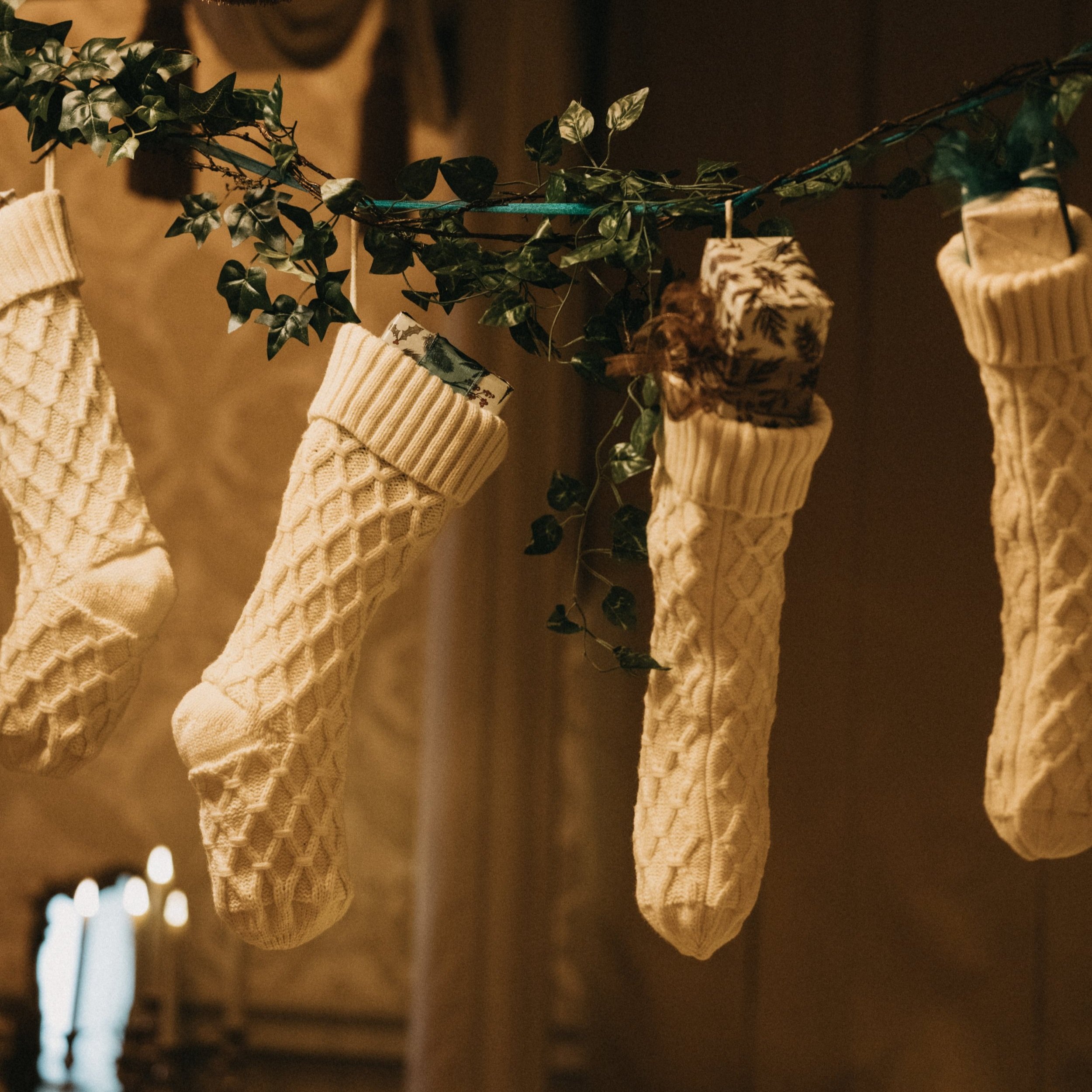Say No to Novelty this Christmas
There are so many blogs about how to have a sustainable Christmas, and last week’s The Great Indoors Podcast (episode 93) had some great ideas too. So I’m not going to repeat what you can find elsewhere, but I’m going to share my ideas about how you can avoid my biggest bugbear – unnecessary excess!
This blog isn’t really about interiors (sorry!) because I don’t go in for themed décor. My house gets filled with foliage and baubles (and maybe a Christmas tablecloth!) in December, but I don’t like the idea of spending lots of money on seasonal bedding, cushions, rugs and lampshades that have to be stored for 11 months of the year. Instead, this blog is about enjoying your Christmas without excessive consumerism.
My main message is: don’t buy novelty tat just for the sake of giving! One of the biggest perpetrators of said tat is the Christmas stocking. Everyone has a stocking in our house, and we have a strict rule that all stocking fillers are useful/will be played with, or consumable, and most importantly, wanted. We also like to keep the budget low, perhaps 10 items with an average price of £10, and in an adult’s stocking maybe one expensive thing such as National Trust membership card. So no novelty pens that write underwater, but I’m very happy with some hand cream, Turkish delight, and a set of screwdriver heads!
We also have a sensible limit on gifts under the tree – 3 per person within the immediate family (my son gets a present from Mummy, a present from Daddy, and a present from Father Christmas). Once you’ve added in all the gifts from grandparents, friends and other relations, there’s still a massive amount of presents under the tree! Amongst the adults on my side of the family we do a Secret Santa which is a great way of avoiding unnecessary consumerism just for the sake of giving. It means that we spend a little more on that one person than we could if we were buying for every member of the family, and that each person receives something worth having.
My second pet peeve is excess food. I’m not talking about being a miser – I'll happily spend a bit more on the fancy range at Christmas! I’m talking about buying too much. Eating chocolate all day until you feel stuffed. Serving 3 types of potato with Christmas dinner. Buying goose fat then only using 3 tbsp and leaving the rest in the fridge until you finally throw it out in August. I particularly hate buying ingredients that you aren’t going to use up before they go off. If you’ve bought so much food that you still have leftovers on the 28th, you’ve bought too much! It can be tempting to buy a lot when you’re hosting to give a feeling of abundance, but the average person consumes 5,373 calories on Christmas day, and really that level of gluttony is unnecessary and doesn’t increase your enjoyment of the day.
My last big no-no is the trend-led Christmas tree. Buying a new set of decorations each year is simply unforgivable. Even when I had my first ever Christmas tree I just bought a few bits, I had a few hand-me-downs, and I hung lots of Lindor and Quality Streets on string to fill the gaps! Just like your interior, your tree should tell your story rather than look like a shop display or magazine shoot (read more about personalised interiors here). I buy one or two decorations each year, and every single bauble has an origin story. This makes the process of decorating the tree really enjoyable as we reminisce over past holidays and previous Christmases.
But what about family traditions that aren’t very sustainable? Those little family rituals are important, they are part of what makes Christmas magical, and they link us to our past and loved ones who are no longer with us. I think the best way to approach them is to see how you can adapt without losing the tradition.
We have always had a clementine and chocolate coins in the toe of our stocking, and this goes back to the 1960s within my family. The tradition of chocolate coins is at least a century old (for Hanukkah and Christmas) and has its origins in the 5th century legend of St Nicholas. The problem is that the excess wrapping isn’t very sustainable. Rather than lose the tradition, I buy them from charity shops so that at least my guilty pleasure is doing some good.
I also buy everything consumable from charity shops (if I’m not making it) – namely advent calendars, advent candles, crackers and Christmas cards. I know e-cards are the sustainable option these days, but for me sending cards is one of those traditions that is really important. I think of childhood visits to my Granny and Grandad’s house, adorned with the hundreds of cards they received covering every available wall, and the sense of community, belonging and love that it represented. I send cards to show people that I’m thinking of them, to connect with people I haven’t spoken to all year, and to connect with older generations who don’t use the internet.
Homemade or reusable advent calendars are another great way to adapt a tradition to be more sustainable, and they aren’t the only things you can make yourself. Christmas crackers are a staple of every British Christmas table, and are really easy to make with wrapping paper, toilet rolls and cracker snaps. For decades we have been making our own when we have the time, or buying ones without tat in when we don’t. No one wants a novelty golf tee or a plastic moustache comb, it’s the epitome of a wasteful and unsustainable Christmas! One year I made a Guess Who of everyone at the dinner table using Photoshop, and you can buy crackers with games in such as Bingo. It’s very easy to get hold of crackers with flower seeds in too, or bird seeds makes a great option for DIY crackers when you have children as they can go outside after dinner and feed the robins.
Value quality over quantity, make connections and happy memories, and have a joyful and wholesome Christmas!





